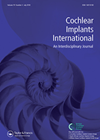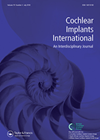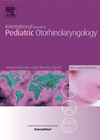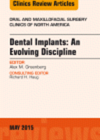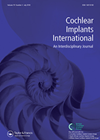
Journal Reviews
Hearing preservation and device benefit following implantation of short or hybrid electrodes
Hybrid or short electrodes have increasingly been used in the literature in order to combine electrical with hearing-aid stimulation. However, hearing preservation of the residual low-frequencies are of utmost importance in this attempt. The present study compared hearing preservation and...
Do the modern multiple microphones with beamforming facility really help implantees?
In this study the authors aimed to assess the benefit beamforming multiple microphones provide to implantees. Speech reception thresholds were assessed in different situations; fixed masking noise from eight loudspeakers around the subject at 0°, ±45°, ±90°, ±135°, and 180°...
Is auditory frequency discrimination related to speech recognition in implantees?
Why do two identical implantees perform differently? This fundamental question has not yet been answered despite the extensive research in the field. The authors attempted to clarify the issue, or at least approach it, assessing the association between deficits in...
‘FOX’ – a new software programme in cochlear implant fitting for audiologists
Taking into account the complex parameters involved in cochlear implant fitting, it appears that the procedure is becoming more and more difficult and variable across cochlear implant centres. For this reason, a software programme called FOX was designed attempting to...
Another comparison of stapedial reflex thresholds and comfort levels in implantees
Many studies in the past have attempted to correlate electrical stapedius reflex threshold (eSRT) and comfort levels in implantees, mainly to assist fitting in young children or adults with difficulties in cooperation with audiologists. The present study assessed 11 adult...
Bone anchored implant stability predicted one week after implantation
Bone conduction (BC) devices can now be implanted as a single stage procedure with minimal soft tissue thinning to reduce the complications in the surrounding skin. The question of optimal loading time has to my mind not been answered. Here...
Post-cancer prosthodontic reconstruction
A functional outcome after head and neck cancer resection is aimed at restoring speech and swallow. Dental reconstruction greatly facilitates this, particularly by enabling the patient to chew food. The authors reinforce the need for careful presurgical planning with treatment...
Differences in timbral cues’ perception between teenagers with cochlear implants and those with normal hearing
The authors aimed to assess timbral cues’ perception of teenagers with cochlear implants and compare it to the respective perception of normally hearing teenagers. Thirty-four teenagers were included in the study, nine Korean adolescents with cochlear implants and 25 adolescents...
Do modern multiple microphones with beamforming facility really help implantees?
In this study the authors aimed to assess the benefit beamforming multiple microphones provide to implantees. Speech reception thresholds were assessed in different situations; fixed masking noise from eight loudspeakers around the subject at 0°, ±45°, ±90°, ±135° and 180°...
Cochlear implantation in immunosuppressed patients. Is it feasible?
The effectiveness of cochlear implantation has led to a relaxation of the candidate criteria. Patients who had been rejected in the past may now be accepted and their outcomes are encouraging. However, the acceptance of immunosuppressed patients as cochlear implant...
How do the rejected candidates for cochlear implantation feel?
This interesting study from the UK explored, using personal interviews, how rejected candidates for cochlear implantation feel and deal with the decision not to implant. The authors assessed 10 adult cochlear implant candidates who had undergone the evaluation process were...
Does head trauma as aetiology of deafness affect the outcomes of cochlear implantation?
Head trauma associated with temporal bone fractures is a well known aetiological factor for deafness. The literature assessing the outcomes of cochlear implantation in such cases is rather limited. In this paper, the authors compared the performance of implantees with...

